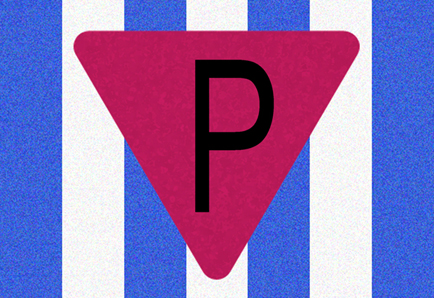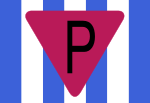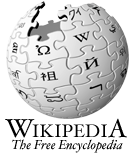 |
This is a file from the Wikimedia Commons. Information from its description page there is shown below.
Commons is a freely licensed media file repository. You can help.
|
Summary
 |
File:P_Oboz.svg is a vector version of this file.
It should be used in place of this raster image when superior.
File:P Oboz.jpg  File:P_Oboz.svg
For more information about vector graphics, read about Commons transition to SVG.
There is also information about MediaWiki's support of SVG images.
|
|
| Description |
English: Jewish symbol in Auschwitz
|
| Date |
27 January 2005 (original upload date) |
| Source |
Transferred from en.wikipedia; transferred to Commons by User:Faigl.ladislav using CommonsHelper. |
| Author |
Original uploader was Emax at en.wikipedia |
Permission
( Reusing this file) |
GFDL-WITH-DISCLAIMERS; Released under the GNU Free Documentation License.
|
Licensing
 |
Permission is granted to copy, distribute and/or modify this document under the terms of the GNU Free Documentation License, Version 1.2 or any later version published by the Free Software Foundation; with no Invariant Sections, no Front-Cover Texts, and no Back-Cover Texts.
Subject to disclaimers.www.gnu.org/copyleft/fdl.htmlGFDLGNU Free Documentation Licensetruetrue
|
File usage
The following pages on Schools Wikipedia link to this image (list may be incomplete):
This file contains additional information, probably added from the digital camera or scanner used to create or digitize it. If the file has been modified from its original state, some details may not fully reflect the modified file.
SOS Childrens Villages has brought Wikipedia to the classroom. More than 2 million people benefit from the global charity work of SOS Children, and our work in 133 countries around the world is vital to ensuring a better future for vulnerable children. Try to find out how you can help children in other countries on our web site.





